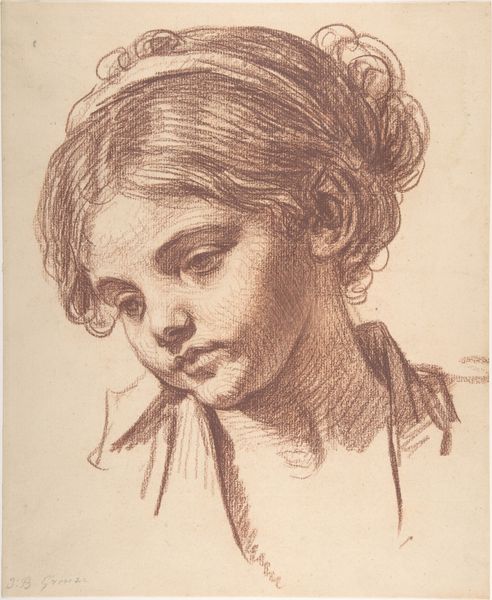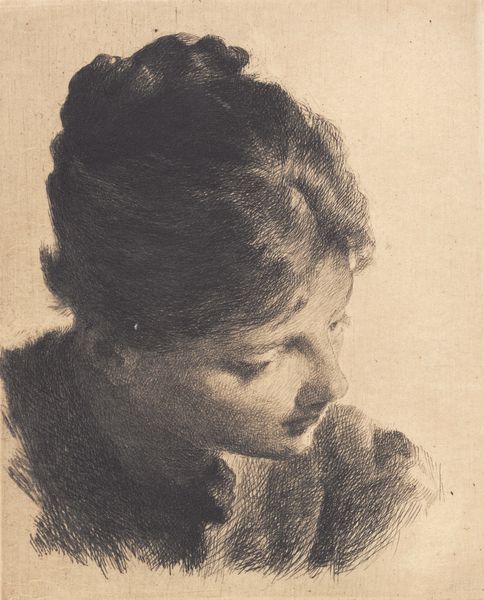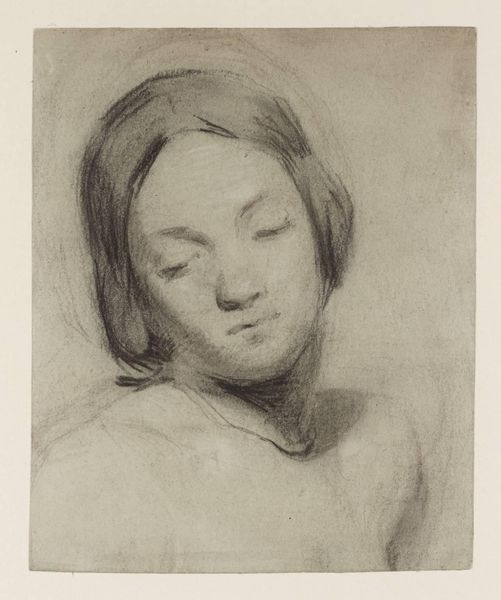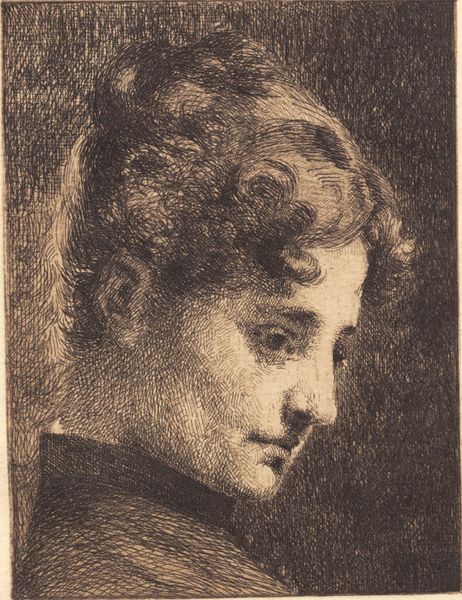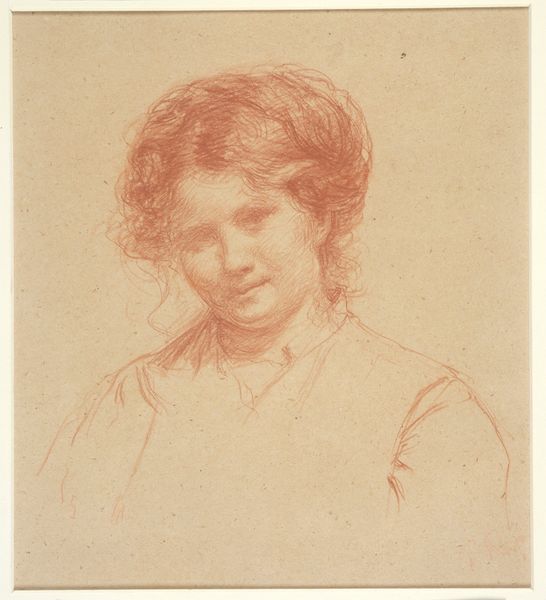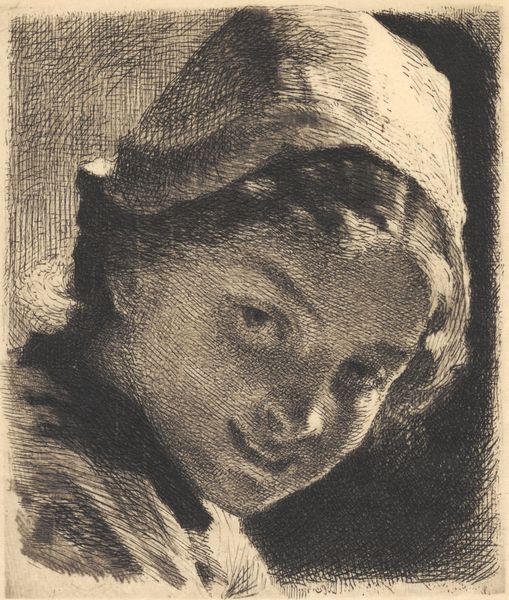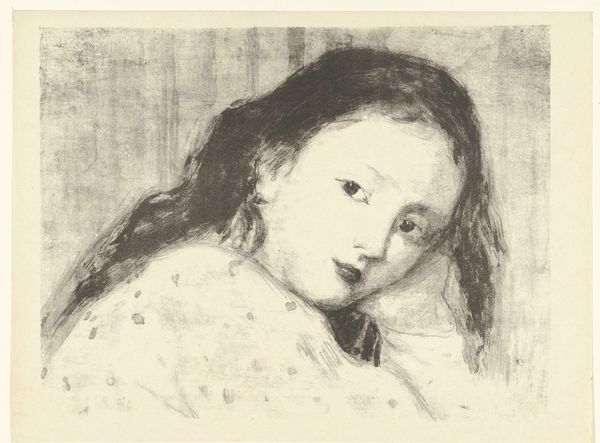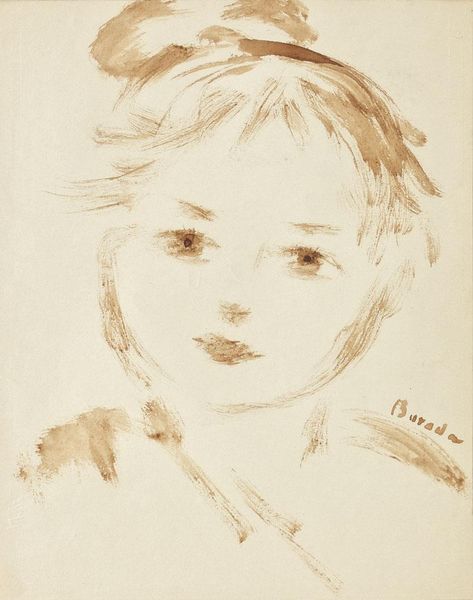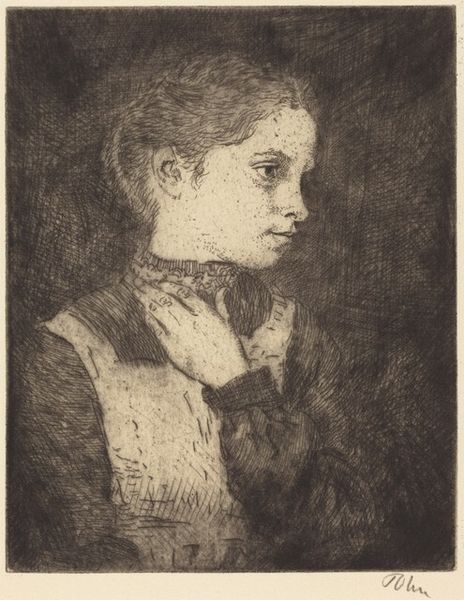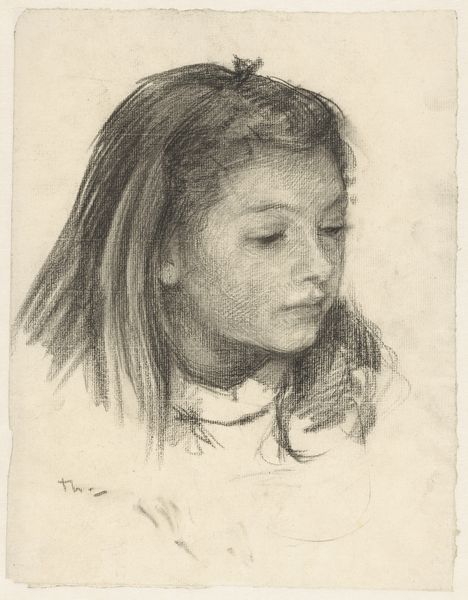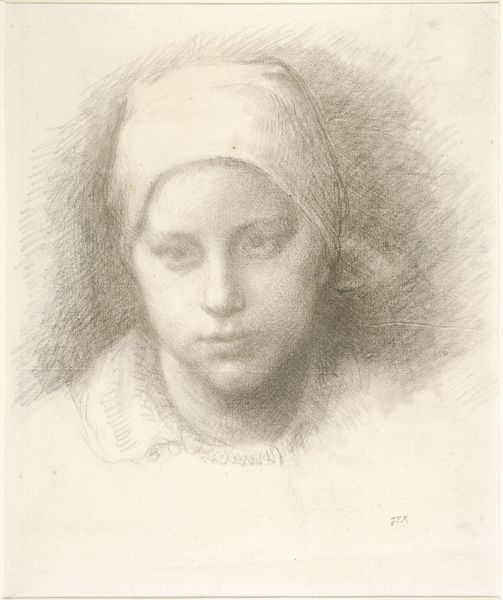
Dimensions: 218 mm (height) x 162 mm (width) (plademaal)
Editor: This is "Head of a Young Girl, Seen from the Front" by Frans Schwartz, created in 1907. It’s an etching, and I find the gaze of the subject quite haunting. What stands out to you when you look at this piece? Curator: The formal construction of this portrait hinges on a fascinating interplay of light and shadow. Note how Schwartz uses densely packed, almost frantic lines around the subject's hair and the periphery of her face. This contrasts with the relative emptiness of the face itself. Do you perceive a calculated balance within this asymmetry? Editor: I do. It's almost as if the background and the shadowed areas are pressing in on the delicate features of the face. Could you speak more about his technique? Curator: The artist employs the etching medium with a keen understanding of line quality. Observe the confident strokes which define the contours, juxtaposed with the finer, almost hesitant lines used to model the form. It’s this variation that lends the work its dynamism and prevents it from becoming merely representational. He coaxes a remarkable range of tones out of what is essentially a black and white medium. The hatching is very skillfully applied to define planes. Notice the shadow along the side of the nose? Editor: I see what you mean about the planes of the face. I initially saw a rather sad image, but your explanation makes me appreciate the technique and structure first and foremost. Curator: Precisely. While emotional response is valid, a formal analysis helps us to appreciate the artist’s intentions and technical prowess, independent of narrative assumptions. We gain insight into not just *what* is depicted, but *how* it is rendered.
Comments
No comments
Be the first to comment and join the conversation on the ultimate creative platform.

